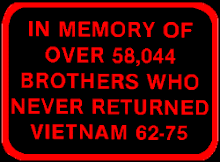C-RATIONS
The C-Ration, or Type C ration, was an individual canned, pre-cooked ration issued to U.S. military land forces when fresh food (A-ration) or packaged unprepared food (B-ration) prepared in mess halls or field kitchens was impractical or not available and when a survival ration (K-ration or D-ration) was insufficient. Development began in 1938, with the first rations being field tested in 1940 and wide scale adoption following soon after. Following World War II, cost concerns later caused the C-ration to be standardized for field issue regardless of environmental suitability or weight limitations.
The C ration was replaced in 1958 with the Meal, Combat, Individual (MCI). Although officially a new ration the MCI was derived from and very similar to the original C ration, and in fact continued to be called "C rations" by American troops throughout its service life (1958-1980), although this nomenclature is, in a strictly technical sense, incorrect.
"Iron Ration" (1907-1922)
The first attempt to make an individual ration for issue to soldiers in the field was the "iron ration", first introduced in 1907. It consisted of three 3-ounce cakes (made from a concoction of beef boullion powder and parched and cooked wheat), three 1-ounce bars of sweetened chocolate, and packets of salt and pepper. The ration was issued in a sealed tin packet that weighed one pound, and was designed for emergency use when the troops were unable to be supplied with food. It was later discontinued by the adoption of the "Reserve Ration", but findings from the development and use of the Iron Ration went into the development of the emergency D-ration.
"Reserve Ration" (1917-1937)
The Reserve Ration was a ration issued during the latter part of World War I to feed troops who were away from a garrison or field kitchen. It originally consisted of 12 ounces of bacon or one pound of meat (usually canned corned beef), two 8-ounce cans of hard bread or hardtack biscuits, a packet of 1.16 ounces of pre-ground coffee, a packet of 2.4 ounces of granulated sugar, and a packet of 0.16 ounces of salt. There was also a separate "tobacco ration" of 0.4 ounces of tobacco and 10 cigarette rolling papers, later replaced by brand-name machine-rolled cigarettes.
After the war, there were attempts to improve the ration based on input from the field. In 1922, the ration was reorganized to consist of 1 pound of meat (usually beef jerky), 3 ounces of canned corned beef or chocolate, 14 ounces of hard bread or hardtack biscuits, coffee and sugar. In 1925, the meat ration was replaced with canned pork and beans. In 1936, there was an attempt at variety by having an "A"-menu of corned beef and a "B"-menu of pork and beans. This was cancelled upon introduction of the new Field Ration, Type C, in 1938.
Commercially prepared meals were used in the field and at times when hot meals were not available. These meals came in a case containing 12 meals. Each meal was in it's own cardboard box, which contained the individual items sealed in cans. A can opener (called both a "John Wayne" or a "P-38") was needed to open the cans. The accessory pack with each meal was sealed in a foil pouch.
This is the official Quartermaster's description of C-Rations used in Vietnam;
"The Meal, Combat, Individual, is designed for issue as the tactical situation dictates, either in individual units as a meal or in multiples of three as a complete ration. Its characteristics emphasize utility, flexibility of use, and more variety of food components than were included in the Ration, Combat, Individual (C Ration) which it replaces. Twelve different menus are included in the specification.
Each menu contains: one canned meat item; one canned fruit, bread or dessert item; one B unit; an accessory packet containing cigarettes, matches, chewing gum, toilet paper, coffee, cream, sugar, and salt; and a spoon. Four can openers are provided in each case of 12 meals. Although the meat item can be eaten cold, it is more palatable when heated.
Each complete meal contains approximately 1200 calories. The daily ration of 3 meals provides approximately 3600 calories." (It'll make a turd the size of a number ten coffee can)
There were 4 choices of meat in each B group. Because there were several "vintages" of C’s issued to the Marines in Vietnam, more than 4 items may be listed in the B groups as well as the brands of cigarettes included in the accessory pack.
B-1 UnitsMeat Choices (in small cans): Beef Steak, Ham and Eggs, Chopped Ham Slices, Turkey Loaf. Fruit: one can of - Applesauce, Fruit Cocktail, Peaches or Pears. Crackers (7 ea.), Peanut Butter, Solid Chocolate, and Accessory Pack.
B-2 UnitsMeat Choices (in larger cans): Beans and Wieners (my favorite), Spaghetti and Meatballs, Beefsteak, Potatoes and Gravy, Ham and Lima Beans, Meatballs and Beans, Crackers (4 ea.), Processed Cheese Spread, Fruit Cake, Pecan Roll, Pound Cake (always a good trade item, as it was excellent pound cake) Accessory Pack.
B-3 UnitsMeat Choices (in small cans): Boned Chicken, Chicken and Noodles, Meat Loaf, Spiced Beef Bread, White Cookies (4 ea.), Cocoa Beverage Powder, Jam- Apple, Berry, Grape,
Mixed Fruit, Strawberry, Accessory Pack.
Subscribe to:
Post Comments (Atom)


No comments:
Post a Comment